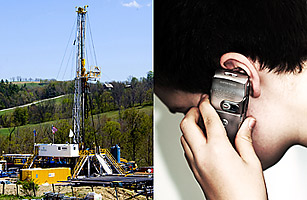
When I first began writing seriously about environmental issues several years ago, one thing annoyed me above all else: the refusal of many climate scientists to talk about the policy implications of their research. I’d be speaking to a researcher who had documented the rapid melting of alpine glaciers, who knew that it was chiefly due to manmade global warming — but they still refused to talk about what we might be able to do to prevent climate change. To do so would mean going beyond the data, and entering the messy world of climate politics — of politics, period. It was much safer to stay within the lines of their chosen academic field, and try to let their work speak for itself.
In the years since, as I’ve learned more about climate science, I’ve found myself becoming more sympathetic towards those researchers who remain reluctant to talk. They may be onto something. That’s because how we perceive the risk that comes from a potential environmental or health threat — and what we think should be done about them — often has far more to with our political and cultural predispositions and biases than it has to do with the science before us. Especially, as is often the case, when the science is less than complete.
That much has been apparent in the recent reaction to two hot-button topics: the potential carcinogenicity of cell phones and the potential risks posed by fracking for shale natural gas. Let’s tackle the concern over cell phones first, which flared up last week after a group of World Health Organization experts classified cell phones as “potentially carcinogenic” to human beings. For many in the field, this was a surprise: before the new ruling just about every major health organization, including the WHO, has said that there was no evidence that cell phones might be harmful to human health. Then, quite suddenly, the international experts who we would expect to know more about the subject than anyone else said that there might actually be a problem. What should we actually think? How worried, if at all, should we really be?
The WHO wasn’t going to be much help there. Having made their pronouncement, the expert panel refrained from actually quantifying the risk cell phone users might face. “Our task was not to quantify the risks,” said Dr. Jonathan Samet, the leader of the WHO panel and a member of President Obama’s National Cancer Advisory Board. “So we’re silent on that question.”
In one sense, the panel deserves credit for only going as far as it believed the data allowed, and no further. But in the absence of guidance from the experts, it was left to us to sort out the risk for ourselves — and that’s where cultural values and bias can begin to distort into the picture. I noticed that activists and environmental epidemiologists — people like Devra Davis, the author of Disconnect, one of the toughest books on the possible cell phone-cancer connection — were quick to use the study to condemn mobile phones. It’s not hard to see why: if your training has led you to look for the hidden environmental causes of cancer, then you’d likely be primed to believe in the threat posed by cell phones. And if you’re naturally skeptical about contradictory research that has been funded by the wireless companies — mobile makers have been behind much of the research on their industry, just as the cigarette companies were decades ago on lung cancer — you’d only become more convinced.
On the other side, many physicists and biologists were quick to reject the WHO’s statement, arguing that it was scientifically impossible for the weak, nonionizing radiation emitted by cell phones to cause cancer.